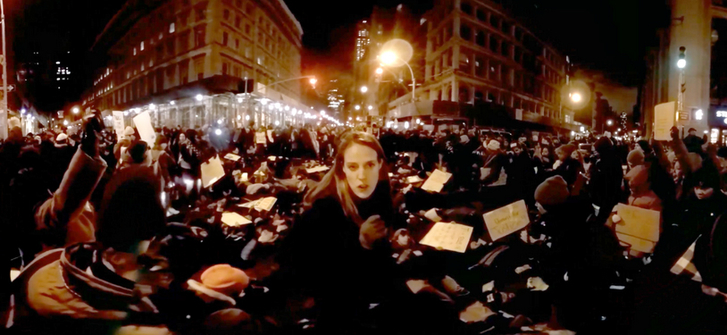Virtual reality promises a lot of potential changes to the way we experience the world, but the ramifications it has for how we tell stories might be among the most interesting. Vice News is offering a glimpse into what news broadcasting might look like when VR is omnipresent with a report on the New York Millions March from December, where people rallied to protest the killings by police of Eric Garner and Mike Brown, as well as the subsequent grand jury decisions in both cases.
Vice’s report uses a 360-degree camera system, following correspondent Alice Speri as she navigates the protest, and provides a look at the protest from an immersive perspective that positions the viewer in the middle of the action. Thanks to Speri, this isn’t just a passive experience of being among surroundings, however – it’s a guided news report, which pushes the experience a step further than most of the early immersive video demo footage we’ve seen thus far.
The Vice VR Millions March report was created by Chris Milk and Spike Jonze, and is available via Milk’s VRSE app, available on both iPhone and Android devices. It’s a nice example of recent innovations in VR storytelling in its own right, but it’s also a better entry point than most for a larger number of people because it supports Google Cardboard, which is cheap and readily available, in contrast to things like Milk VR from Samsung and the Oculus Rift developer hardware.

Milk also created the UN’s ‘Clouds Over Sidra’ VR film launched by the U.N. at the World Economic Forum in Davos today, which also appears in the VRSE app on the platforms mentioned above. It’s a very different example of how VR might be used to tell stories, this time as an account meant to recreate the experience of refugees from the Syrian civil war.
It’s easy to see how VR could provide a compelling medium either for documentary, news reporting or cinema verité-style experiences, based on these new productions. For now, the experience is still something individuals have to actively seek out, and supplement their device kit to enjoy, so it’s unlikely to become a core focus of media organizations soon. Still, VR storytelling is obviously compelling, even with a limited initial audience.
